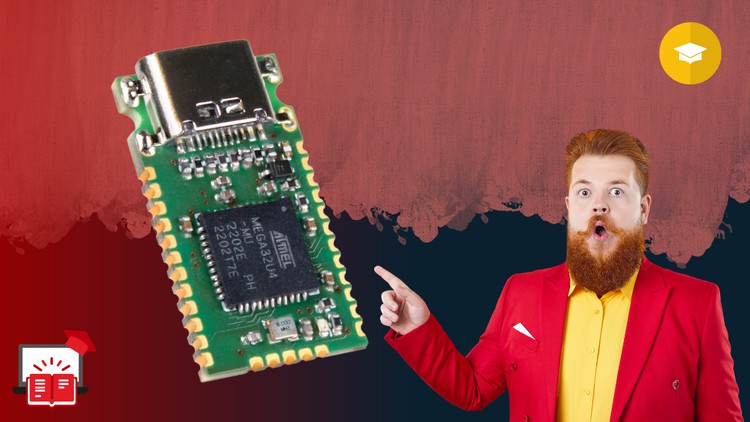
Mastering Distance Measurements with LIDAR Sensors: From Theory to Practice
What you will learn
Understand the basics of LIDAR technology and its applications
Learn about the different types of LIDAR sensors and how they work
Select and wire LIDAR components for a project
Program a microcontroller to interface with a LIDAR sensor and interpret its data
Build and assemble a LIDAR circuit on a breadboard and PCB
Customize LIDAR projects to suit specific needs and applications
Troubleshoot and optimize LIDAR projects
Interpret LIDAR data and use it to make informed decisions
Build specific LIDAR projects, such as obstacle avoidance or 3D scanning
Gain practical experience by building their own LIDAR projects from scratch.
Description
LIDAR sensors are becoming increasingly popular in a variety of applications, from robotics and autonomous vehicles to environmental monitoring and surveying. In this comprehensive course, we’ll teach you everything you need to know about using LIDAR sensors for accurate distance measurements.
First, we’ll cover the basics of LIDAR technology, including how it works, the different types of LIDAR sensors available, and their applications. We’ll also delve into the physics behind LIDAR and the factors that can affect the accuracy of your measurements.
Next, we’ll show you how to set up your LIDAR sensor and interface it with your microcontroller or computer. We’ll walk you through the process of selecting the right LIDAR sensor for your project, and provide detailed instructions on how to wire it up and configure it for use.
Once you have your LIDAR sensor up and running, we’ll show you how to take accurate distance measurements using a variety of techniques. We’ll cover time-of-flight (TOF) measurements, phase-shift measurements, and other methods for measuring the distance with LIDAR. We’ll also show you how to use the data from your LIDAR sensor to create 3D maps and point clouds.
Finally, we’ll showcase some example projects that you can build using your LIDAR sensor. These range from simple distance measurement projects to more complex projects, such as autonomous navigation and obstacle avoidance for robotics.
By the end of this course, you’ll have a thorough understanding of LIDAR technology and how to use it for accurate distance measurements. Whether you’re a hobbyist or a professional, this course will provide you with the skills and knowledge you need to take your projects to the next level.
course outline:
- Introduction to LIDAR Technology
- Introduction to Components
- VL53L0X Sensors
- OLED
- Laser
- Circuit Part 1
- Circuit Part 2
- Project Demonstration
- Project 1 Demonstration
- Project Build 1
- Project Build 2
By the end of this course, students will have a thorough understanding of LIDAR technology and its applications. They will learn how to choose and wire LIDAR components, program microcontrollers, design and build LIDAR circuits, and interpret LIDAR data. Additionally, students will gain practical experience by building their own LIDAR projects and customizing them to suit their specific needs. Whether students are hobbyists, students, or professionals, this course will provide them with the skills and knowledge needed to take their LIDAR projects to the next level.
Content